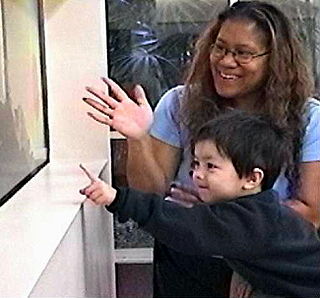Chapters
Chapter One - Diagnosis: Surviving the Worst News You'll Ever Get
Chapter Two - Ending the Long Silence: Teaching Your Child to Communicate
Chapter Three - Tears, Meltdowns, Aggression, and Self-Injury: Breaking the Cycle
Chapter Four - Self-Stimulation: Flapping, Banging, Twirling, and Other Repetitive Behaviors
Chapter Five - Social Skills: Turning Language and Play into Meaningful Interactions
Chapter Six - Battling Fears and Fixations: Bringing Your Child Back to the Real World
Chapter Seven - Education: Finding the Right School Placement and Making It Even More Right
Chapter Eight - Family Life: Fighting Your Way Back to Normalcy

Ole Ivar Løvaas was a Norwegian-American clinical psychologist and professor at the University of California, Los Angeles. He is most well known for his research on what is now called applied behavior analysis (ABA) to teach autistic children through prompts, modeling, and positive reinforcement. The therapy is also noted for its use of aversives (punishment) to reduce undesired behavior, however these are now used less commonly than in the past.
Discrete trial training (DTT) is a technique used by practitioners of applied behavior analysis (ABA) that was developed by Ivar Lovaas at the University of California, Los Angeles (UCLA). DTT uses direct instruction and reinforcers to create clear contingencies that shape new skills. Often employed as an early intensive behavioral intervention (EIBI) for up to 30–40 hours per week for children with autism, the technique relies on the use of prompts, modeling, and positive reinforcement strategies to facilitate the child's learning. It previously used aversives to punish unwanted behaviors. DTT has also been referred to as the "Lovaas/UCLA model", "rapid motor imitation antecedent", "listener responding", errorless learning", and "mass trials".

Applied behavior analysis (ABA), also called behavioral engineering, is a psychological intervention that applies empirical approaches based upon the principles of respondent and operant conditioning to change behavior of social significance. It is the applied form of behavior analysis; the other two forms are radical behaviorism and the experimental analysis of behavior.
The refrigerator mother theory, also known as Bettelheim's theory of autism, is a largely abandoned psychological fringe theory that the cause of autism is a lack of maternal (figurative) warmth. Evidence against the refrigerator mother theory began in the late 1970s, with twin studies suggesting a genetic etiology, as well as various environmental factors. Modern research generally agrees that there is a largely epigenetic etiology of autism spectrum disorders.
The following outline is provided as an overview of and topical guide to autism:

The University of North Carolina TEACCH Autism Program creates and disseminates community-based services, training programs, and research for individuals of all ages and skill levels with autism spectrum disorder (ASD), to enhance the quality of life for them and their families across the lifespan.

Autism therapies include a wide variety of therapies that help people with autism, or their families. Such methods of therapy also seek the increase of functional independence in autistic people. Many therapies marketed towards autistic people and/or their parents claim outcomes that have not been supported by Level of Research (LOE) Level 1. Level 1 research includes evidence from a systematic review or meta-analysis of all relevant RCTs or evidence-based clinical practice guidelines based on systematic reviews of RCTs or three or more RCTs of good quality that have similar results.

Like Colour To The Blind (1996) is the third in a series of four autobiographical works by internationally bestselling autistic author Donna Williams. Once published in the US using the American spelling 'color', it is now published worldwide by Jessica Kingsley Publishers using the UK spelling 'colour'. It has been published in several languages worldwide.
Pivotal response treatment (PRT), also referred to as pivotal response training, is a naturalistic form of applied behavior analysis used as an early intervention for children with autism that was pioneered by Robert Koegel and Lynn Kern Koegel. PRT advocates contend that behavior hinges on "pivotal" behavioral skills—motivation and the ability to respond to multiple cues—and that development of these skills will result in collateral behavioral improvements. In 2005, Richard Simpson of the University of Kansas identified pivotal response treatment as one of the four scientifically based treatments for autism.
Social Stories were devised as a tool to help individuals with ASD better understand the nuances of interpersonal communication so that they could "interact in an effective and appropriate manner". Although the prescribed format was meant for high functioning people with basic communication skills, the format was adapted substantially to suit individuals with poor communication skills and low level functioning. The evidence shows that there has been minimal improvement in social interaction skills. However, it is difficult to assess whether the concept would have been successful if it had been carried out as designed.
Frances Tustin was a pioneering child psychotherapist renowned for her work with children with autism in the 1950s. She became a teacher and began studying psychoanalysis in 1943 at the University of London.
Claire Scovell LaZebnik is an American novelist/author. She is the wife of American television writer Rob LaZebnik, with whom she has four children. She is also the sister of television writer Nell Scovell and of children's book writer Alice Scovell Coleman. She was raised in Newton, Mass and attended Newton South High School. She graduated from Harvard University in 1985.
The developmental social-pragmatic model (DSP) is a developmental intervention that focuses on initiation and spontaneity in communication and following the child's focus of attention and motivations. Developmental interventions focus on a child's ability to form positive, meaningful relationships with other people when these are hampered by autism spectrum disorders such as autism or Asperger syndrome, or developmental disorders. It aims to build on the child's current communicative repertoire, even if this is unconventional; and using more natural activities and events as contexts to support the development of the child's communicative abilities.
The professional practice of behavior analysis is a domain of behavior analysis, the others being radical behaviorism, experimental analysis of behavior and applied behavior analysis. The practice of behavior analysis is the delivery of interventions to consumers that are guided by the principles of radical behaviorism and the research of both experimental and applied behavior analysis. Professional practice seeks to change specific behavior through the implementation of these principles. In many states, practicing behavior analysts hold a license, certificate, or registration. In other states, there are no laws governing their practice and, as such, the practice may be prohibited as falling under the practice definition of other mental health professionals. This is rapidly changing as behavior analysts are becoming more and more common.
The Autistic Self Advocacy Network (ASAN) is an American 501(c)(3) nonprofit advocacy organization run by and for individuals on the autism spectrum. ASAN advocates for the inclusion of autistic people in decisions that affect them, including: legislation, depiction in the media, and disability services.
Edward Gary Carr was an internationally recognized pioneer in autism treatment research. He applied studies about the functions that self-injurious behaviors served and contributed substantially to the development and refinement of positive behavior support. In addition, he assessed the benefits of teaching sign language to children with expressive and receptive language disorders as seen in children with autism. He was the Director of the Research & Training Center on Positive Behavior Support for Autism & Developmental Disabilities at Stony Brook University.

Autism, formally called autism spectrum disorder (ASD) and autism spectrum condition (ASC), is a neurodevelopmental disorder characterized by deficits in social communication and social interaction, and repetitive or restricted patterns of behaviors, interests, or activities, which can include hyper- and hyporeactivity to sensory input. Autism is a spectrum disorder, meaning that it can manifest very differently in each person. For example, some are nonspeaking, while others have proficient spoken language. Because of this, there is wide variation in the support needs of people across the autism spectrum.
Gunilla Gerland is a Swedish author and lecturer on the topic of autism. Her written works include Secrets to Success for Professionals in the Autism Field: An Insider's Guide to Understanding the Autism Spectrum, the Environment and Your Role and her autobiography A Real Person: Life on the Outside.
Diagnosis, treatment, and experiences of autism varies globally. Although the diagnosis of autism is rising in post-industrial nations, diagnosis rates are much lower in developing nations.
The history of autism spans over a century, autism has been subject to varying treatments, being pathologized or being viewed as a beneficial part of human neurodiversity. The understanding of autism has been shaped by cultural, scientific, and societal factors throughout history, and its perception and treatment change over time as scientific understanding of autism develops.






